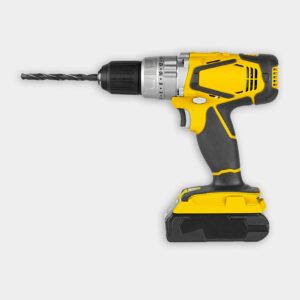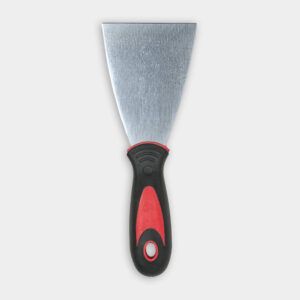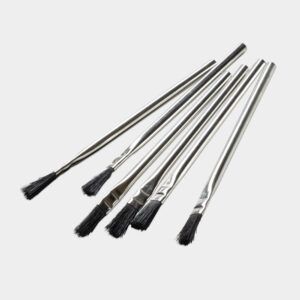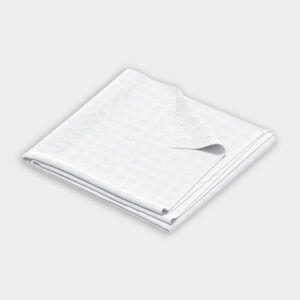Project details
Skill
Cost
Estimated Time
We may be compensated if you purchase through links on our website. Our team is committed to delivering honest, objective, and independent reviews on home products and services.
A split door jamb can compromise your home’s security and energy efficiency or affect the overall appearance of your door and home. Fortunately, repairing this common issue is usually a straightforward do-it-yourself (DIY) project that most homeowners can tackle with basic tools and materials. This guide and the video above, featuring This Old House general contractor Tom Silva, will walk you through the process of fixing a split door jamb, from assessing the damage to applying the final touches.
Assess the Split Door Jamb Damage
Before beginning the repair process, you’ll need to check the extent of your door jamb’s damage to determine the best course of action and materials needed.
Identify the Split
Carefully examine the door jamb for visible cracks, splits, or splintering. Pay close attention to areas near the hinges and strike plate, as these are common locations for damage. Look for any loose or broken pieces of wood that may need to be removed or reattached.
Determine the Cause
Understanding what caused the split can help prevent future damage. Common causes include:
- Excessive force when opening or closing the door
- Improper installation of the door or jamb
- Natural wood expansion and contraction due to temperature changes
- Water damage from leaks or high humidity
Evaluate Repair Options
Based on the severity of the damage, decide whether a simple repair will suffice or if a full replacement is necessary. In most cases, a split door jamb can be repaired without replacing the entire frame.
Safety Considerations
When dealing with a damaged door jamb, always prioritize safety. Wear appropriate safety gear, such as gloves and safety glasses, to protect yourself from splinters and debris. If you suspect structural issues are contributing to the damage, consult a professional for a thorough evaluation.
Tools and Materials to Repair a Split Door Jamb
Before starting the repair, make sure you have all the necessary tools and materials on hand. You’ll need the following:
Tools
- Acid brush
- Drill/driver
- Drop cloths
- Hammer
- Putty knives (1 1/2-inch and 3-inch)
- Sandpaper (80-grit)
- Screwdriver
Materials
- Auto body filler
- Canvas drop cloth
- Carpenter’s glue
- Painter’s tape
- Scrap wood block
Optional Tools and Materials
While not absolutely necessary, the following tools and materials can make the repair process more efficient:
- Clamps: Useful for holding wood pieces in place as the glue dries
- Wood filler: An alternative to auto body filler for smaller repairs
- Utility knife: Handy for trimming excess wood or glue
How To Repair a Split Door Jamb
These five steps will walk you through repairing your split door jamb using the tools and materials listed above.
1. Prepare the Work Area
Before you can start replacing the door jamb, you’ll need to prepare the area. Do the following:
- Remove the storm door frame if present. Carefully unscrew and remove the storm door frame from the doorway to get better access to the damaged areas of the jamb.
- Remove any hardware if present. You’ll also need to remove any hardware, such as the strike plate or weather stripping, that’s preventing you from accessing and repairing the jamb.
- Protect the area. Lay a canvas drop cloth across the threshold to catch any debris or excess filler. Use painter’s tape to secure the drop cloth.
- Ventilate the space. Open windows and doors, or use fans to promote air circulation.
2. Remove Damaged Wood
- Carefully remove any broken or split pieces of wood from the jamb.
- Use a putty knife or screwdriver to gently pry loose pieces away, being careful not to cause further damage.
- Remove any small splinters or loose fibers that might interfere with the repair.
3. Repair the Split Door Jamb
With the work area prepared, you can now begin the actual repair process. Follow these steps:
- Apply the adhesive. Apply carpenter’s glue to the broken wood pieces and, aligning them, carefully reattach them to the jamb. Use a scrap wood block and hammer to tap the glued pieces tightly against the jamb, as Tom Silva demonstrates in the video.
- Allow the glue to dry. This typically takes a few hours, but consult the glue manufacturer’s instructions for specific drying times. Avoid disturbing the repaired area during this time.
- Sand the repaired area. Using 80-grit sandpaper, sand until the surface is even with the surrounding wood, removing any excess glue or rough spots.
- Consider reinforcing the repair. This is an optional step for door jambs that need additional strength due to high-stress, such as near the hinges or strike plate. Drill pilot holes to prevent further splitting, then secure the repaired area with nails or screws.
4. Apply Auto Body Filler
To create a seamless finish and conceal any imperfections, you’ll need to apply auto body filler to the repaired areas.
- Mix the filler. Mix a dollop of auto body filler (about the size of a golf ball) with the recommended amount of hardener using two putty knives. Mix until the color is consistent.
- Apply the filler. Spread the mixed auto body filler over the repaired areas using the 3-inch-wide putty knife. Apply it generously, as you’ll sand it down later. Feather the edges to blend the filler with the surrounding wood surface.
- Allow the filler to harden. Let the auto body filler harden completely according to the manufacturer’s instructions. This typically takes 15–30 minutes, but it can vary depending on the product and environmental conditions.
- Consider adding multiple layers. If the filler wasn’t enough to create a perfectly smooth finish, repeat the previous steps with a second layer.
5. Add the Finishing Touches
After the repair is complete, there are a few final steps to create a professional-looking result.
- Prime and paint. If necessary, prime the repaired area to seal and protect the wood and filler. Once the primer is dry, paint the entire jamb to match the rest of the door frame.
- Reinstall storm frame door and hardware. If you removed any hardware or a storm door frame, reinstall them.
- Consider caulking. For additional protection against moisture and drafts and more durability, apply a bead of high-quality caulk around the repaired area. Focus on gaps between the door jamb and the wall, as well as any joints in the jamb itself.
- Test the door. Open and close several times to make sure it operates smoothly and latches properly.
Our Conclusion
Repairing a split door jamb is a quick, easy, and inexpensive DIY project that should only take you one to two hours. If your door jamb is broken, following the steps above can restore it to its original condition, improving the frame’s appearance. For exterior doors, this project can enhance your home’s security and energy efficiency.




